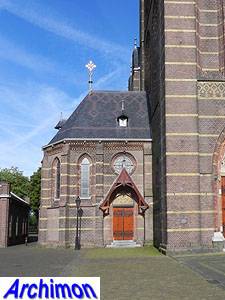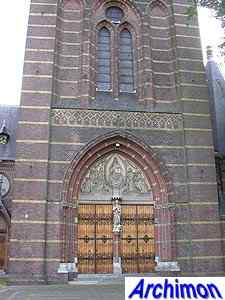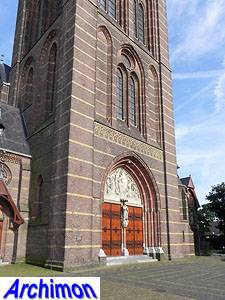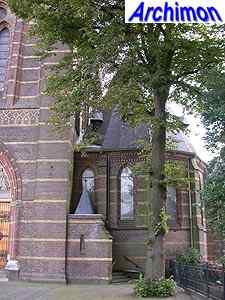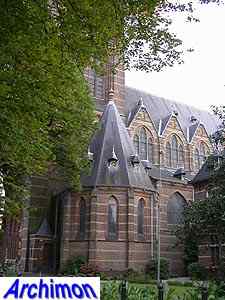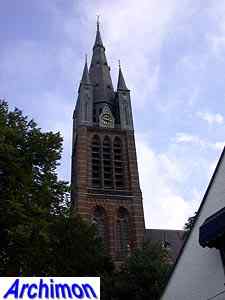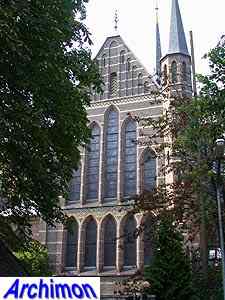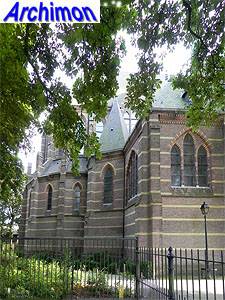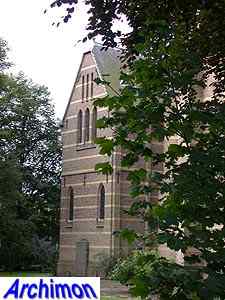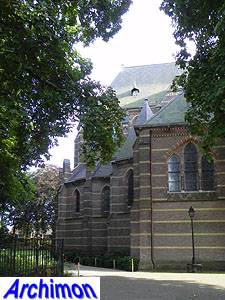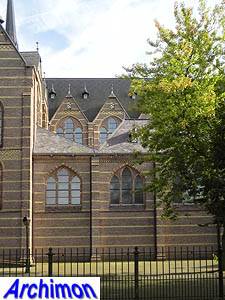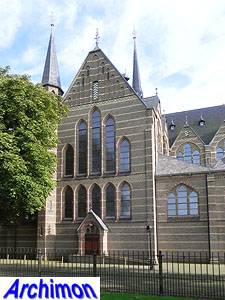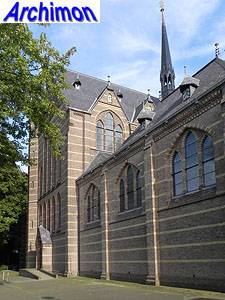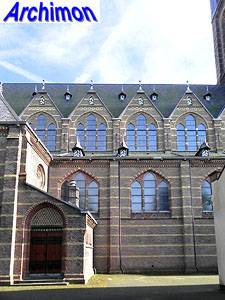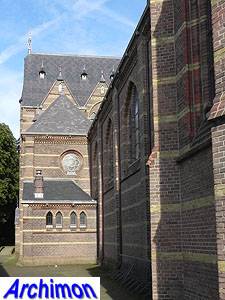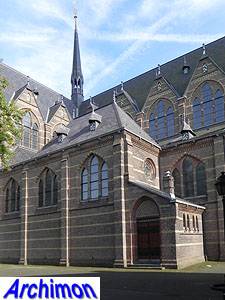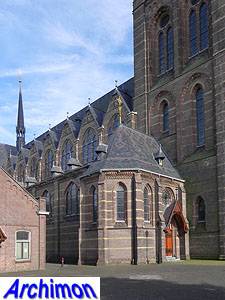
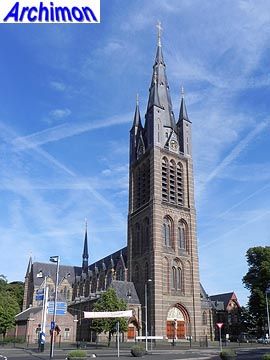 When
in 1887 an earlier church had become too small for Hilversum's
Roman-Catholic parish of St. Vitus, P.J.H.
Cuypers was invited to design a new one. Cuypers designed two
versions. The first was for a towerless church with a presbytery and
baptistry, the second for a for a church with a tower but no baptistry.
Both plans included a presbitery. For financial reasons the towerless
option was chosen.
When
in 1887 an earlier church had become too small for Hilversum's
Roman-Catholic parish of St. Vitus, P.J.H.
Cuypers was invited to design a new one. Cuypers designed two
versions. The first was for a towerless church with a presbytery and
baptistry, the second for a for a church with a tower but no baptistry.
Both plans included a presbitery. For financial reasons the towerless
option was chosen.
On May the 12th of 1891 the first stone was laid. Overseer of the
project was K.P.C. de Bazel, who later became a famous architect
himself. Cuypers' son Jos Cuypers was responsible for many of the
details of the design.
In the meantime several influencial catholics had started an action to
collect the needed money that should make the construction of a tower
possible. This turned out to be a great success. Early September 1892
the church was completed.
The finished church is an important specimen of Cuypers' later work.
Several colours of brick were used in both the interior and the exterior. It's a
remarkably big church, a part three-aisled, part five-aisled cruciform
basilican church with a transept that far extends the width of the
nave, which is covered by intricate wooden vaults. The 98 metres tall
tower is crowned with a spire with turrets at the corners and is itself
decorated by deep niches. Cuypers took inspiration from several Gothic
styles. English influences are the triplet-windows of the clerestory
and the 'climbing' series of five lancet-windows in the facades of the
transept. The apse is in early French Gothic style.
The presbytery is in Cuypers usual combination of Gothic and
Renaissance elements for such buildings and his profane designs, with a
decorative use of wood.
